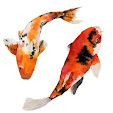Spaying A Coating
What is a Spray Coat? Applying a spray coat to your raw project is a great way to seal the surface and allow your final topcoats to lay on the wood much smoother and with finer luster. We can spray a coating right after we finish our surface prep, this is called a Wash Coat, why we apply a wash coat is to avoid the wood for blotching with a wiping stain, this also gives a consistent colour to our project. We also can spray what we call a sanding coat before or after your stain for more durability and protection for the stain or the project, these are great for a piece that will get used often like a table, chair, etc... The last spray coat will be a Lacquer, 15°, 35°, 50°, and 90° is all up to you or your client depending on the sheen you want to achieve.....Higher the number, more shine you will get.
Types of Spray Coats
- Wash Coat
- Sanding Sealing
- Lacquers 15°, 35°, 50°, and 90°
Here I decided to spray 90° lacquer
How to choose a Lacquer The number on the lacquer is how on which angle the light will reflect off the piece into the persons eyes. As i stated earlier above, higher the number more shine you will get. Here i choose a 90° which means anywhere you stand the light will reflect at that angle, and will be more blingy than any hip hop artist chains, watch or earrings.
Setting up the Lacquer: There are a few steps to setting up our syphon gun to be able to spray this coat on our project. The most important thing is to find the right viscosity, for this we need a Ford cup or a Zahn cup and a Stop watch.
First we put a filter to make sure no particails from the coating gets into our gun
Here is how we filter to get no spill over
Next we want to get the right viscosity so we can get a nice even coat. We do this but adding a solvent, in this case since we are using lacquer we will be adding lacquer thinner.
here is our lacquer thinner This is a ford cup so we can measure the viscosity
Now using the same filter as the lacquer pour the lacquer thinner, the ratio should be 9/10 lacquer and 1/10 lacquer thinner in your pot. This is where your going to pull out your phone and go to the stop watch app. 1. first put the ford cup in your material making sure that there is enough material to fill the cup. 2. As soon you pull out the cup from the pot and its fully exposed that is when you start the count. 3. When the drizzle line first breaks that is when we stop the count, we are looking for 23-25 seconds. 4. if you are over this time, just add a little more lacquer thinner
here my lacquer was to thick and my time was off
To reduce the time, lacquer thinner was needed and i started the process again
Now that it's the right viscosity, its time to spray! this is where we want a nice even layer, and not to thick, the more material you use, the thicker the coat and more chances of runs in our coating. Runs in coat can potentially make you start over, and no one likes sanding so we don't wanna do that. When we spray we want to keep a nice fluent motion, keeping our body square and not moving our wrist. We want to do a type writer motion starting from the bottom of the project, working our way up, left to right or right to left is all up to you. One thing we always wanna do is keep a distance 6-8" away from the project and keeping the gun nozzle parallel to what you are spraying, keeping a wide fan, right amount of material and the air adjustment just right. To do get these adjustments there are links below
http://finishingschedules.blogspot.ca/2018/04/air-pressure-on-syphon-gun.html
http://finishingschedules.blogspot.ca/2018/04/fan-tastic.html
One thing we want to avoid at all cost is OVER SPRAY!!! This can cause little particles to get picked up from your previous sprays and make them land on your project. These small dust particles will leave white specs in the film, and this might be a cause to start over by remove this layer by sanding when it dries.
Here we see the distance is a little far at times and that its going over the edges of the project causes a little over spray, but overall this is what we want to achieve. After spraying your coat let dry for an hour, scruff sand with 320 grit sandpaper when dry making it smooth and leaving keys, then repeat process until it's the way you want and it's perfect.
Happy Spraying & DON'T FORGET
http://finishingschedules.blogspot.ca/2018/04/air-pressure-on-syphon-gun.html
http://finishingschedules.blogspot.ca/2018/04/fan-tastic.html
One thing we want to avoid at all cost is OVER SPRAY!!! This can cause little particles to get picked up from your previous sprays and make them land on your project. These small dust particles will leave white specs in the film, and this might be a cause to start over by remove this layer by sanding when it dries.
Here we see the distance is a little far at times and that its going over the edges of the project causes a little over spray, but overall this is what we want to achieve. After spraying your coat let dry for an hour, scruff sand with 320 grit sandpaper when dry making it smooth and leaving keys, then repeat process until it's the way you want and it's perfect.
Happy Spraying & DON'T FORGET











Comments
Post a Comment